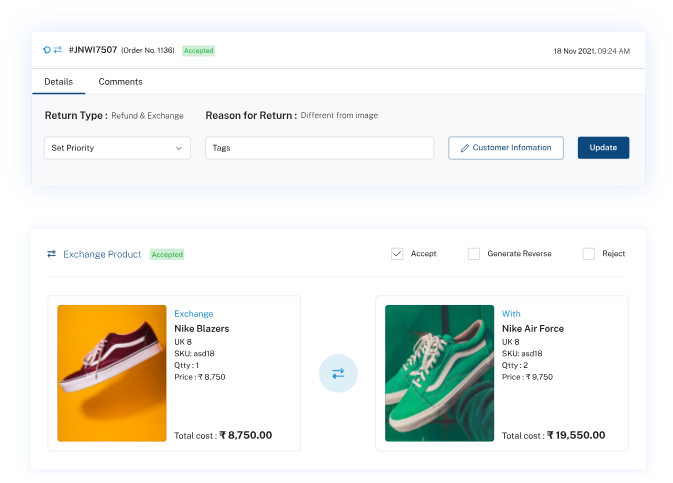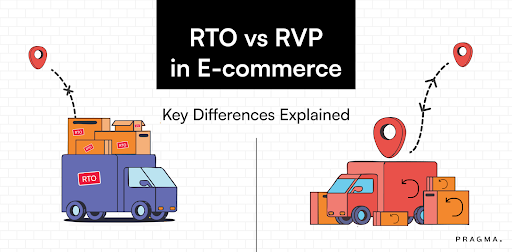With over 40% of online consumers abandoning carts due to delivery concerns and competition growing across marketplaces, learning the functions of logistics management is non-negotiable.
Consider these realities:
- Warehousing costs have increased by 30% in major metropolitan areas
- Returns processing consumes 8-10% of total operational budgets for most fashion D2C brands
This guide explores the components and functions of logistics management that contribute to building resilient and responsive delivery operations for DTC brands—The 7 Key Functions of Logistics Management in E-commerce.
Introduction to Logistics Management in E-commerce
Logistics management involves planning, implementation, and control of the efficient flow and storage of goods, services, and related information from the point of origin to the point of consumption.
Though often used interchangeably with supply chain management, they serve different purposes.
For those interested in understanding these distinctions, our article on logistics and supply chain management differences provides helpful clarification.
The activities typically include inbound and outbound transportation management, fleet management, warehousing, materials handling, order fulfilment, logistics network design, inventory management, and more.
The growth in online shopping has significantly changed consumer expectations.
Customers now demand faster deliveries, real-time tracking, flexible return policies, and transparent communication throughout the delivery lifecycle.
Making logistics management a competitive differentiator rather than just a necessity.
Key Functions of Logistics Management

1. Order Processing
Order processing involves the complete cycle from the moment a customer places an order to when they receive it.
It begins with order receipt, verification, and payment processing and ends with shipping notification and delivery confirmation.
Be sure to use a reliable order management system (OMS) that can handle multiple sales channels, payment gateways, and fulfilment options.
It must also provide you with real-time visibility into customer support teams and end customers about order status.
Use Pragma's 1Checkout system to cut down checkout time from 8-9 minutes to just 10 seconds, helping minimise cart abandonment and providing customers with multiple payment options.

2. Inventory Management
This component helps balance having enough stock to meet customer demand without tying up excessive capital in unsold inventory.
When done right, it prevents both stockout and overstock cases.
Key aspects of inventory management involve
- Demand forecasting and planning
- Stock level monitoring across multiple locations
- Implementing inventory control methods (FIFO, LIFO, JIT)

- Safety stock determination
- Inventory categorisation (ABC analysis)
- Seasonal inventory planning
If you are facing inventory challenges, like managing stock across multiple sales channels and fulfilment centres.
Implement an inventory management system to gain real-time visibility and use predictive analytics to optimise your stock levels based on historical data and market trends.
3. Warehousing and Storage
It is the physical component of inventory management within the broader framework of logistics management.
It involves the planned storage of products until they're ready for shipment through
- Strategic warehouse location selection based on customer concentration
- Efficient storage space utilisation
- Logical product organisation and placement
- Clear labelling and tracking systems
- Appropriate environmental controls for sensitive products
- Safety and security procedures
For growth-stage brands, decisions about warehouse management, whether to manage in-house, outsource to third-party logistics providers (3PLs), or use a hybrid approach, can significantly impact your scalability.
4. Transportation Management
It is about moving products efficiently from suppliers to your warehouses and, ultimately, to customers.
This function of logistics management involves selecting appropriate transportation modes, carriers, and routes to optimise cost, time, and reliability.
In this step, you must select the appropriate components, such as
- Carrier selection and management
- Route optimisation
- Freight consolidation
- Transport mode selection (road, rail, air, sea)
- Delivery Scheduling
- Cost negotiation and management
- Performance tracking and analysis
The complexity of transportation management increases as you begin operating across different geographic regions, dealing with international shipping, customs regulations, and varying carrier capabilities.
This is why a proper transportation management system (TMS) is required to help coordinate these complexities and provide visibility throughout the shipping process.
5. Packaging and Handling
It is what impacts product protection, shipping costs, customer experience, and brand perception the most.
This packaging planning ensures your products reach their destination undamaged while optimising space utilisation during transport.
Important considerations for best packaging
- Product protection during transit
- Dimensional weight optimisation to reduce shipping costs
- Brand presentation and unboxing experience
- Sustainable packaging options
- Package labelling and tracking integration
- Specialised packaging for fragile or hazardous items
Packaging serves as the physical extension of your brand's online shopping experience.
Hence, thoughtful packaging design is vital to reinforce brand identity and create memorable unboxing moments that your customers share on social media, extending brand reach.
Beyond the customer experience, efficient packaging within your warehouse environment also impacts order fulfilment speed and accuracy.
A standardised packaging process, appropriate materials selection, and ergonomic packing stations all contribute to better efficiency.
6. Reverse Logistics
Reverse logistics manages the return management of products from customers back to your location.
In e-commerce, where the return rates range is significantly higher than in brick-and-mortar retail, the right reverse logistics processes constitutes
- Clear return policies and procedures
- Streamlined return authorisation processes
- Efficient inspection and sorting of returned items
- Appropriate disposition decisions (restock, refurbish, liquidate, or dispose)
- Data collection and analysis to identify return patterns and reasons
- Integration with inventory management systems
Well-managed reverse logistics can help you recover value from returned products, improve customer satisfaction, and unveil valuable insights for future product development and quality control.
It also encourages initial purchases by reducing customer risk.
This is what Pragma's Return Management System helps you with by automating exchange and refund processing with branded customer experiences, enabling you to recover value from returned products without compromising on customer experience.

7. Monitoring and Information Flow
Information flow forms the connective tissue, connecting all functions of logistics management.
Monitor and manage this flow carefully to ensure all logistics activities operate with accurate, timely data, allowing for informed decision-making.
Essential elements of monitoring and information flow are
- Real-time tracking and visibility across the supply chain
- Performance metrics and KPI tracking
- Data collection, analysis, and reporting
- Communication protocols between different logistics functions
- Integration of systems (ERP, WMS, OMS, TMS)
- Exception management and alerts
Challenges in E-commerce Logistics
E-commerce logistics management has its challenges that you must consider and develop effective strategies to overcome.

1. Last-Mile Delivery Complexities
The final step in the delivery journey, from the distribution centre to your customer's doorstep, often presents the most significant challenges due to
- High costs (accounting for up to 53% of total shipping costs)
- Delivery time window constraints
- Access issues in congested urban areas
- Address inaccuracies and location difficulties
- Customer availability to receive packages
- Managing customer expectations for quick delivery
2. Inventory Forecasting and Management
Accurate inventory forecasting is one of the most difficult functions of logistics management for the majority of companies to perfect.
And it is mostly because of
- Seasonal demand fluctuations are difficult to predict
- New product introductions lack historical data
- Flash sales and promotional events create demand spikes
- Multiple sales channels complicate inventory allocation
- Product variations (sizes, colours, models) multiply the complexity
- Limited warehouse space constraints, stock levels
All these factors add up to create a "bullwhip effect," where small changes in consumer demand cause larger fluctuations up the supply chain.
But with the right forecasting tools incorporating machine learning, you can mitigate these effects by analysing patterns across large customer datasets.
3. Supply Chain Visibility and Data Integration
Many brands struggle with limited visibility across their supply chain, mainly due to
- Disconnected systems and data silos
- Lack of real-time information sharing
- Limited visibility into supplier operations
- Difficulty tracking inventory across multiple locations
- Challenges in predicting and responding to disruptions
- Manual processes leading to data errors
The functions of logistics management require integrated technology platforms that can provide you with end-to-end visibility.
4. Cost Management and Optimisation
Controlling logistics costs and meeting customer expectations remains a friction point, considering the
- Rising transportation costs due to fuel price fluctuations
- Labour costs and warehouse space expenses
- Packaging material costs and sustainability requirements
- Technology implementation and maintenance expenses
- Balancing speed and cost in delivery options
- Managing seasonal capacity needs
To Wrap It Up
From order processing to information flow, each function of logistics management works together to help you offer consumers better delivery experiences.
The challenges facing logistics operations—last-mile delivery, inventory forecasting, and cost management—require thoughtful strategies and sometimes technological solutions.
However, Brands that excel in these seven key areas gain
- Higher customer satisfaction and retention
- Reduced operational costs
- Better working capital utilisation
- Increased ability to scale efficiently

FAQ (Frequently Asked Questions On Functions Of Logistics Management)
1. Why is logistics management important?
Logistics management helps e-commerce businesses deliver products efficiently, reduce costs, and improve customer satisfaction. It optimises inventory, minimises waste, and creates a competitive advantage through reliable delivery.
2. What are the key logistics functions that impact D2C brands in India?
- Inventory Management: Ensuring real-time stock visibility across warehouses, marketplaces, and D2C websites.
- Order Fulfillment: Efficiently picking, packing, and shipping to meet same-day & next-day delivery demands.
- Shipping & Last-Mile Delivery: Choosing the right courier partners and optimising for low-RTO risk.
- Reverse Logistics & Returns Management: Handling exchanges and refunds and reducing return fraud.
- COD & Payment Reconciliation: Managing cash flow and minimising COD fraud & payment delays.
- Data & Performance Analytics: Tracking delivery success rates, NDR (Non-Delivery Reports), and optimising operations.
- Customer Communication & Order Tracking: Proactive WhatsApp/SMS updates to reduce "Where is my order?" queries.
3. How can D2C brands optimise their order fulfillment process?
- Multi-warehouse strategy: Storing inventory closer to demand hubs for faster delivery.
- Smart demand forecasting: Preventing overstocking & stockouts by predicting sales trends.
- Automated order processing: Syncing website, marketplace, and WhatsApp orders into a single fulfillment system.
- Hyperlocal shipping partnerships: Using specific services for instant deliveries in metro cities.
4. What are the three types of logistics?
The main types are inbound logistics (receiving materials), outbound logistics (delivering products to customers), and reverse logistics (handling returns). Each requires different processes and systems for proper management.
5. What are the biggest challenges in last-mile delivery, and how can brands fix them?
- High RTO rates (40-50% on COD orders) → Implement COD confirmation, UPI-first nudges, & address validation.
- Delayed deliveries in Tier 2 & 3 cities → Use regional 3PL partners for better coverage.
- Fake delivery attempts by carriers → Track via real-time GPS and automated NDR follow-ups.
- Customer unavailability → Use WhatsApp-based delivery scheduling to reduce failed attempts.
6. How can brands reduce return losses through smarter reverse logistics?
- Data/AI-driven real-time return fraud detection: Flagging habitual returners & setting return restrictions.
- Exchange-first approach: Offering instant discounts or cashback to convert refunds into exchanges.
- Prepaid-only returns: Avoid COD-based refund scams by processing returns only for prepaid orders.
- Smart resell/repackaging strategies: Resell returned items via warehouse QC & refurbished sales channels.
7. What technology can improve logistics efficiency for D2C brands?
- Intelligent logistics platforms (e.g., Shiprocket, Pickrr, Delhivery) for auto-assigning couriers.
- WhatsApp-based order tracking to reduce customer support queries.
- Live carrier performance tracking to optimise shipping partners based on success rates.
Smart NDR (Non-Delivery Report) automation to auto-reattempt deliveries based on customer responses.
Talk to our experts for a customised solution that can maximise your sales funnel
Book a demo



.png)
.png)